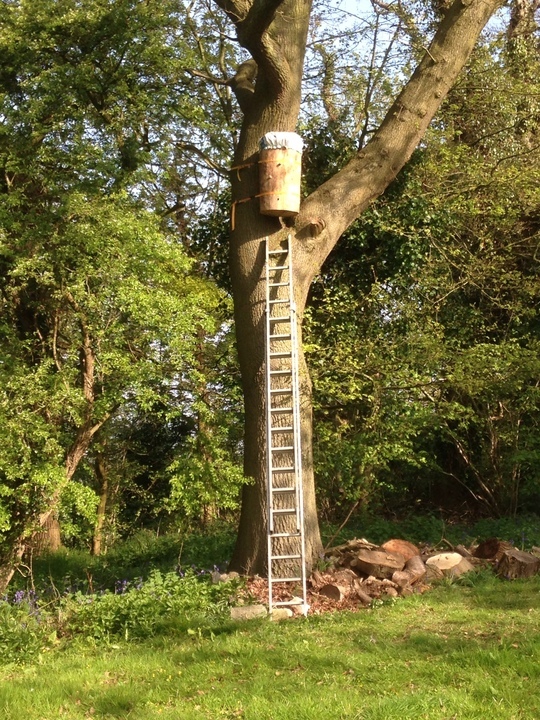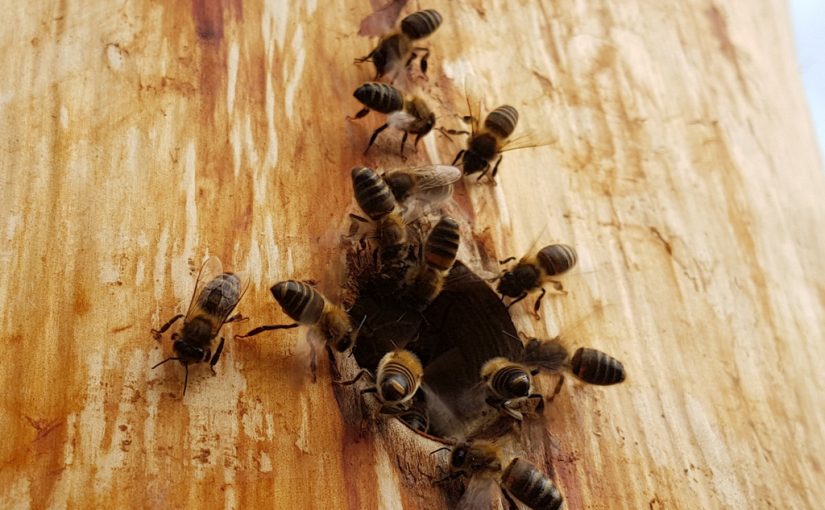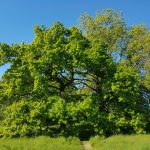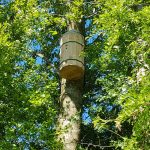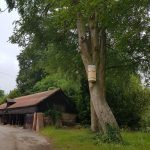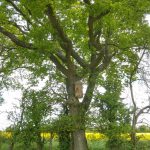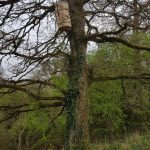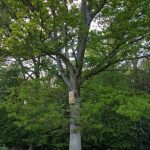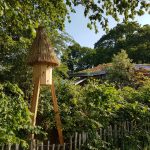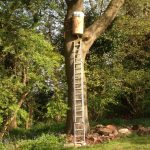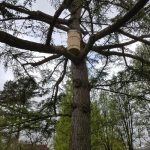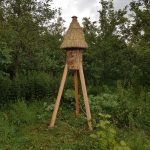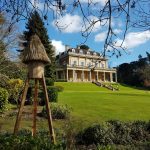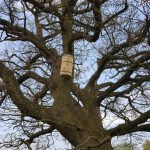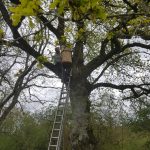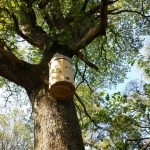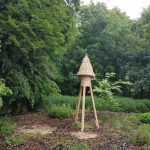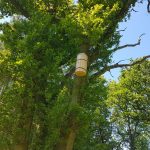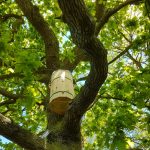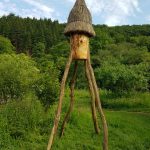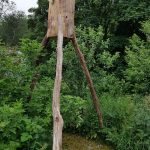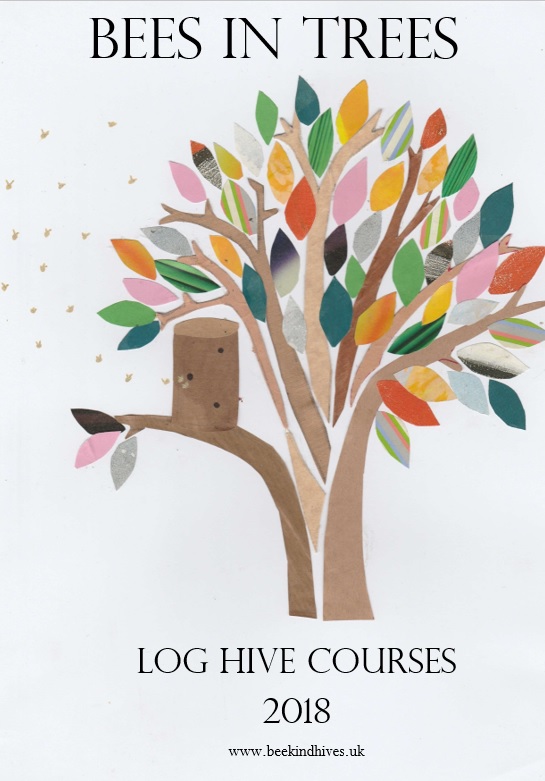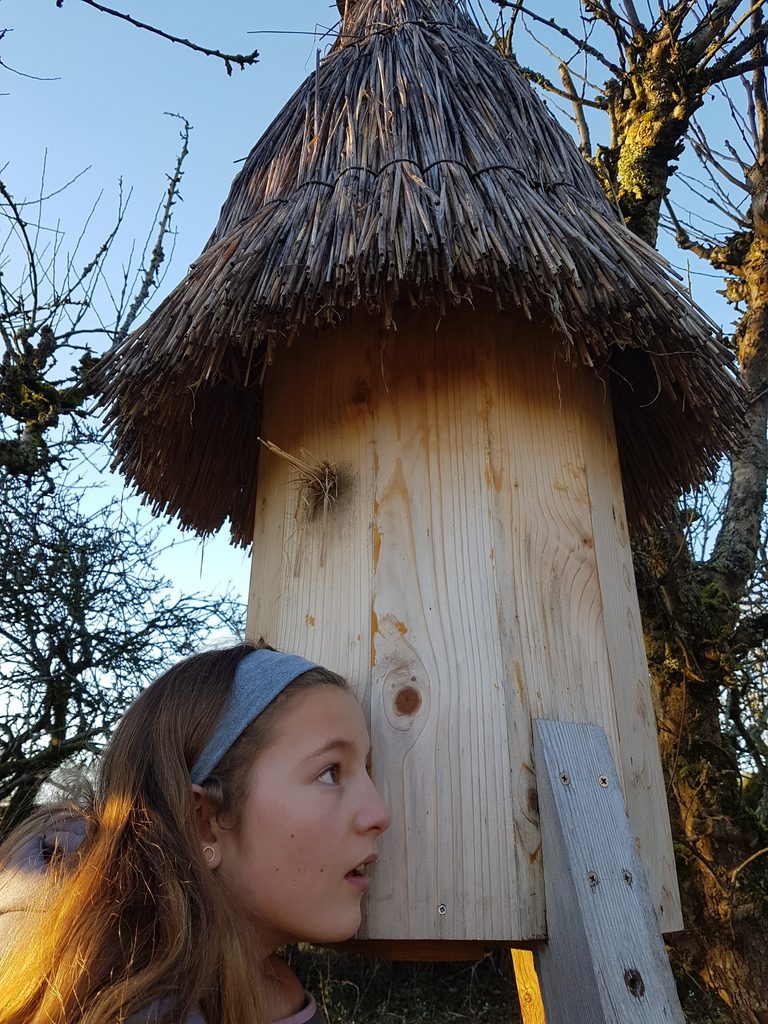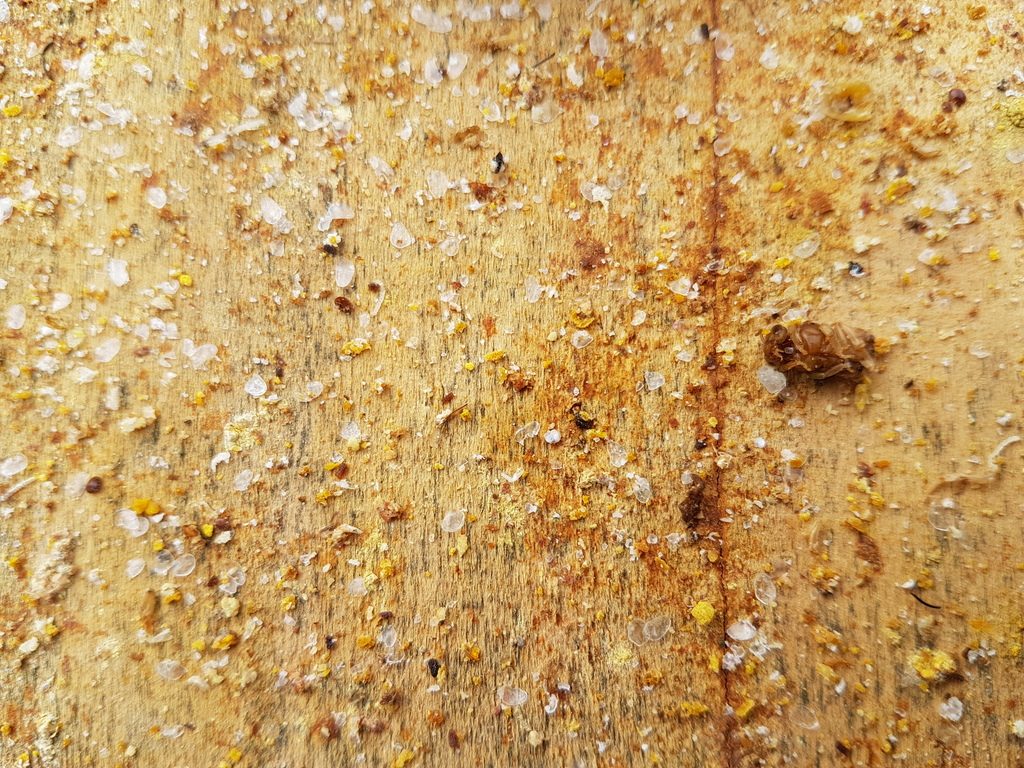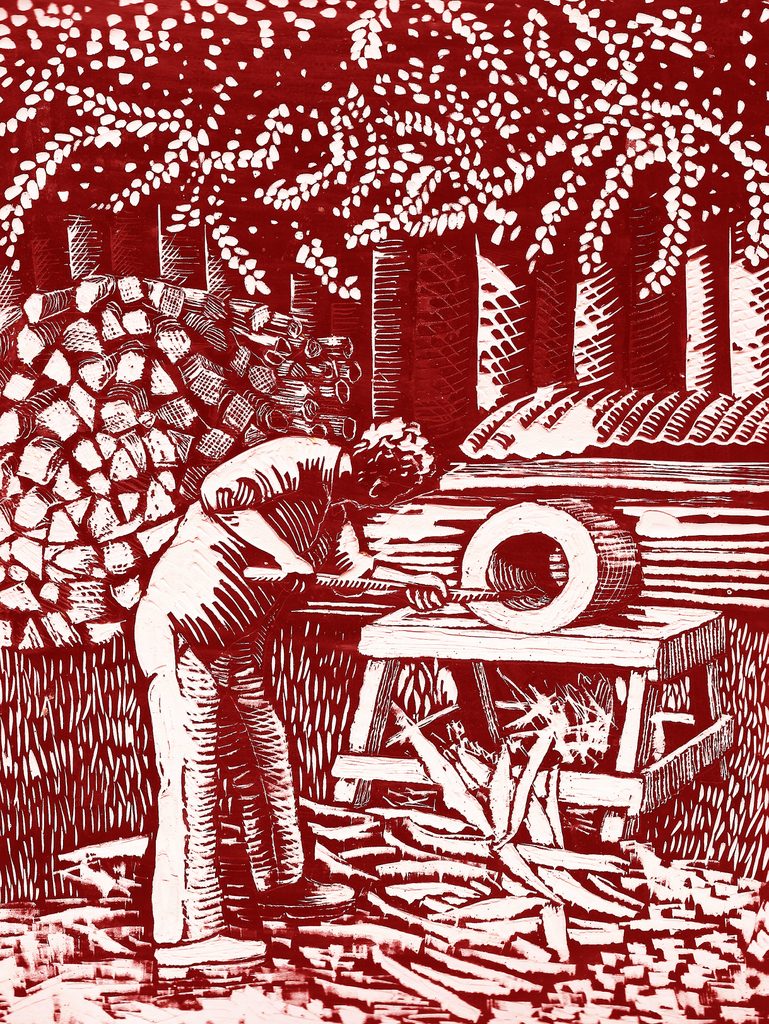 In March 2017, I ran my first log hive making course.
In March 2017, I ran my first log hive making course.
Both the log and freedom hive have been very successful in attracting bees. By attending a course I hope that I can show how, using a few tools, to make a hive and then give advice on making it attractive to bees and the best places to site the hive. My inspiration for making such hives has been to look at the wild bees in my area. I am so lucky to have found many, living in both trees and houses and if the weather is good, I hope to show some of them, which have survived many years without human intervention.

Thomas Seeley, an American scientist who has devoted his life studying wild bees has just published a paper, on Darwinian beekeeping, suggesting how we need to rethink how we “keep bees”. The article can be read here or you can visit the Natural beekeeping trust website and read more about the science behind this approach to beekeeping.
Film maker Tanya Cochrane made this short film on this year’s course.
Course Update July 2017
The great news is that everyone who made a log at the course and put it in a tree or on legs has had success, and are overjoyed by the arrival of a swarm. Some actually witnessed the bees disappear like a vortex into an entrance hole.
Keith Emerson, who attended the course, describes how it felt to witness such an event:
“When my swarm arrived it was literally a moment when you just have to say wow!
It was like a dream with the air filled with bees and the sound of humming everywhere.
I was gob smacked and totally enchanted with the magical theatre before me.
A moment to always treasure and never forget.
The second swarm I caught the tail end of.
I watched it powerless as thousands of bees controlled the air and all around them.
It was once in a lifetime thrill that everyone must experience.
It felt like a baptism .”
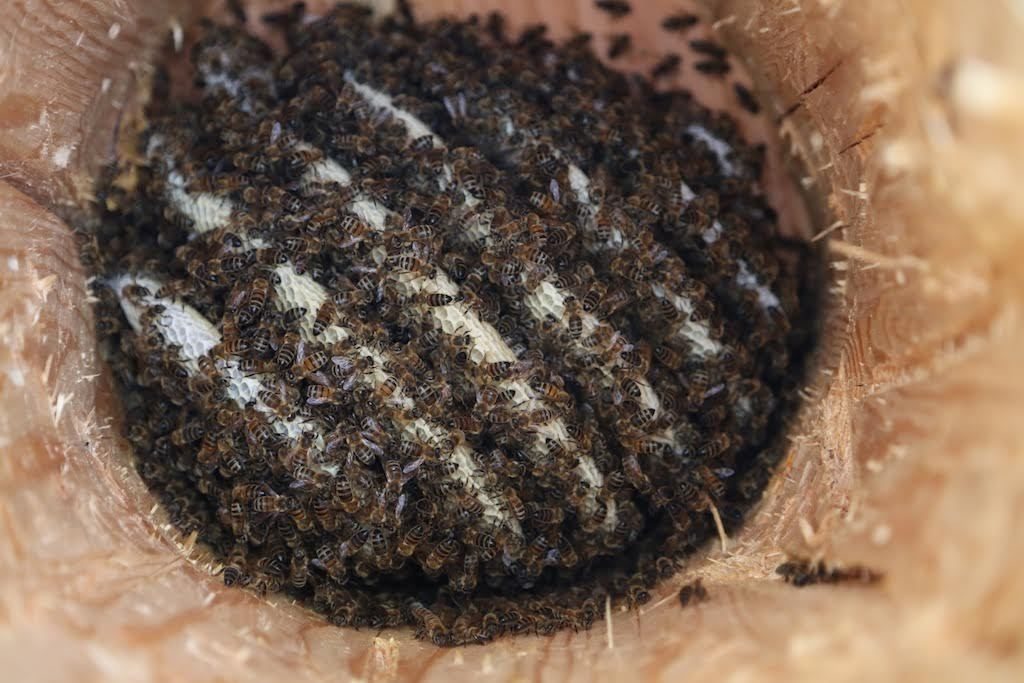
4 weeks later on removing the base, you can see the beautiful new comb growing down from the top.
As a result of this course, I am planning to run small courses in the Autumn and early Spring and encourage more people to get involved and bring bees back into the wild. If interested please contact me for more details.
